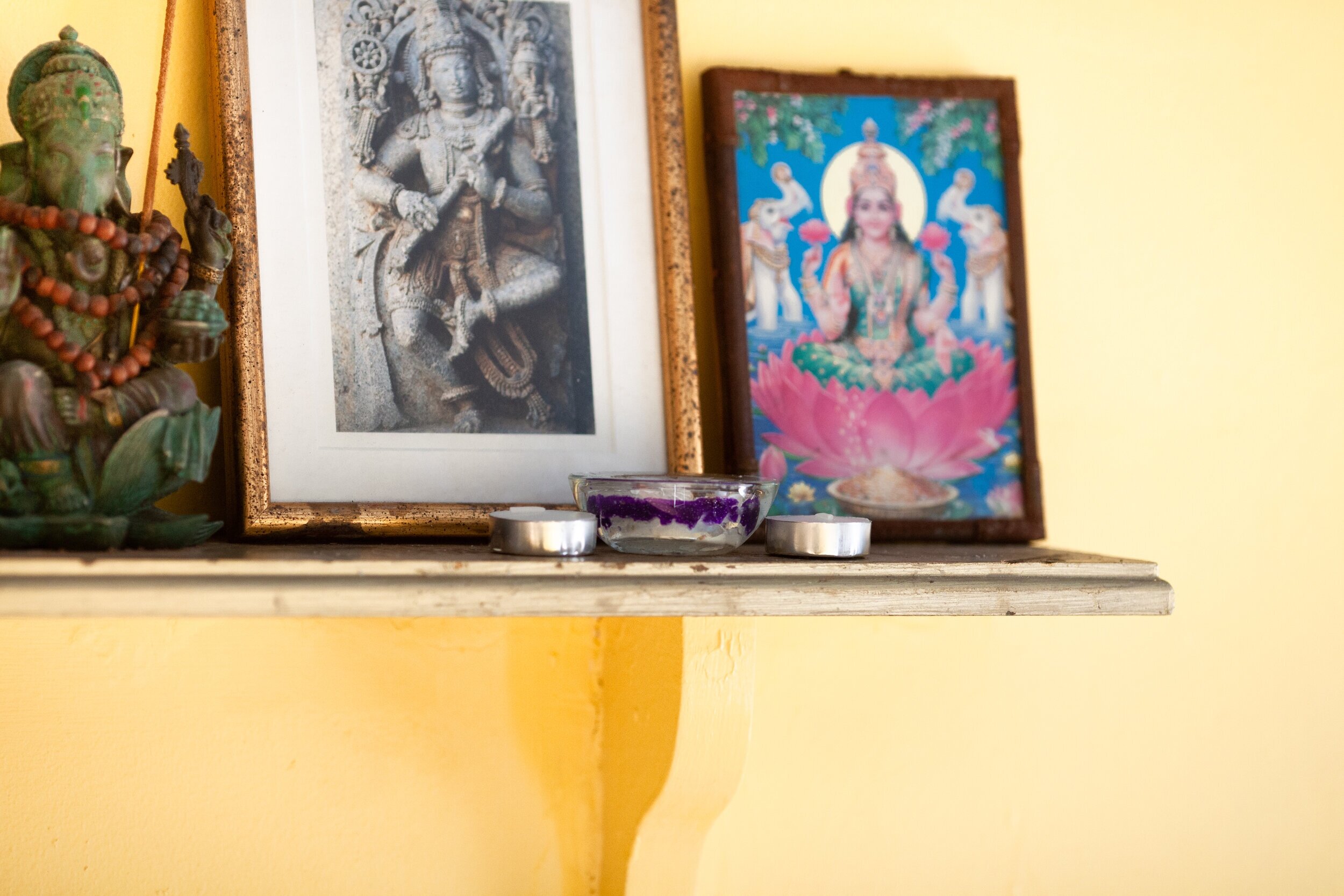
About
About astanga yoga
Yoga is a philosophy of life, which also has the potential to create a vibrantly healthy body and mind. Practised in its correct sequential order, astanga (pronounced ‘ash – tan – ga’) yoga gradually leads the practitioner to rediscover his or her fullest potential on all levels of human consciousness: physical, psychological and spiritual. Through this practice of correct breathing (ujjayi pranayama), postures (asanas), and gazing point (dristi), we gain control of the senses and a deep awareness of ourselves. By maintaining this discipline with regularity and devotion one acquires steadiness of body and mind.
The word astanga comes from the philosophical system behind yoga based on an eight faceted approach to reaching a state of yoga. It literally means ‘eight limbs’ and these are described by Patanjali as: Yama (abstinences), Niyama (observances), Asana (postures), Pranayama (breath control), Pratyahara (sense withdrawal), Dharana (concentration), Dhyana (meditation), and Samadhi (contemplation). These branches support each other. Asana practice must be established for proper practice of pranayama, and is a key to the development of the yamas and niyamas. Once these four externally oriented limbs are firmly rooted, the last four internally oriented limbs will spontaneously evolve over time.
‘Vinyasa’ means breath synchronised movement. The breath is the heart of this discipline, and links asana to asana in a precise order. By synchronising movement with breathing, and by practising mula and uddiyana bandhas (locks), an intense internal heat is produced. This heat purifies muscles and organs, expelling unwanted toxins as well as releasing beneficial hormones and minerals, which can nourish the body when the sweat is massaged back into the skin. The breath regulates the vinyasa and ensures efficient circulation of blood. The result is a light, strong body.
There are three groups of sequences in the astanga system.
The Primary Series (Yoga Chikitsa) detoxifies and aligns the body. The Intermediate Series (Nadi Shodhana) purifies the nervous system by opening and clearing the energy channels. The Advanced Series A, B, C and D (Sthira Bhaga) integrate the strength and grace of the practice, requiring higher levels of flexibility and humility.
Each level is to be fully developed before proceeding to the next, and the sequential order of asanas is to be meticulously followed. Each posture is a preparation for the next, developing the strength and balance required to move further.
Breath
The continuity of deep, even breathing cannot be over-emphasised in the astanga yoga system. When breath feeds action, and action feeds posture, each movement becomes gentle, precise, and perfectly steady.
Breathing is our most fundamental and vital act and holds a divine essence: exhalation a movement towards God, and inhalation an inspiration from God. Our last action in life is to exhale, which, in essence, is the final and total surrender to God.
Practice
It is said that where there is no effort there is no benefit. Strength, stamina and sweat are unique aspects of this traditional yoga, seemingly contrary to Western perceptions of yoga. This demanding practice requires considerable effort and taps into and circulates a vital energy throughout the body, strengthening and purifying the nervous system. The mind then becomes lucid, clear and precise and ‘Wherever you look you will see God’. Only through practice will we realise the truth of what our guru often says:
‘Everything is God’.
About Mysore self-practice
At Astanga Yoga London we teach astanga yoga in a traditional method known as ‘Mysore self-practice’, which originated in Mysore, South India. Students are taught individually within a group environment and practise at their own pace with one-to-one advice and sometimes adjustments given by the teacher.
Working in this way allows you to focus on your breath and encourages a meditative quality to your practice.
Complete beginners are always welcome – please see our beginners’ page to find out more about how to start and what to expect.
About Astanga Yoga London
We are an astanga yoga school that tries to teach in a traditional way so students can progress at their own pace. We offer quality, compassionate teaching. We try to ensure everyone feels welcome as we feel the idea of a supportive community is very important. We usually work with hands-on adjustments: if you feel uncomfortable with this, just let us know: no questions or judgement.
We found the current shala space in 2005. Six weeks later, having had Dave the builder pull it to pieces and then re-build while Anna gave birth to our lovely daughter, Talia, we opened with samosas and tea.
We have a small kitchen area and library: please feel free to use. For many students the shala becomes like a second home.
Our shala is named ‘Dharma Shala’ inspired by the story of an ancient Indian king called Ashoka who built many ‘dharma shalas’ to support wandering yogis. We hope our dharma shala will be a supportive place for you.
aśāntasya kutaḥ sukham
Without peace where is happiness?
— Bhagavad Gītā 2.66
Go to our ‘more about yoga’ page for opening and closing astanga chants, poems, quotes and to learn a little bit more about yoga,..